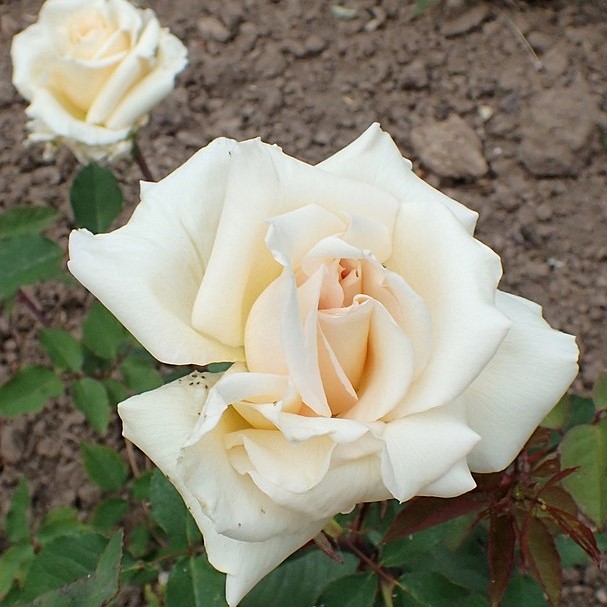During the fourth decade of the nineteenth century European nurserymen started to breed new varieties of roses, by hybridizing two China roses, "Hume's Blush China" and "Park's Yellow Tea-Scented China" with Bourbons and Noisettes. These hybrids were first called "China Tea-Scented Roses", and later "Tea Roses"
Whether their scent is tea-like is to be decided by the person who smells the rose, as, even though almost all tea roses have a good scent, it differs a lot from rose to rose. Tea Roses are bushy plants with glossy dark green leaves, sometimes with climbing tendency, very often blooming for a long season.
In 1845 a Chinese Tea Rose, "Fortune's Double Yellow", was introduced in Europe. This Tea, together with "Park's Yellow Tea-Scented China" introduced yellow in the range of colours of Tea Roses, which goes from yellow to oran-ge, salmon, crimson, and extraordinary hues, like the "leather" of "Général Gallieni". 1325 varieties of Teas were introduced up to 1910; after that year very few more were produced.
Tea Roses are rather tender, and do not adapt easily to cold climates.

